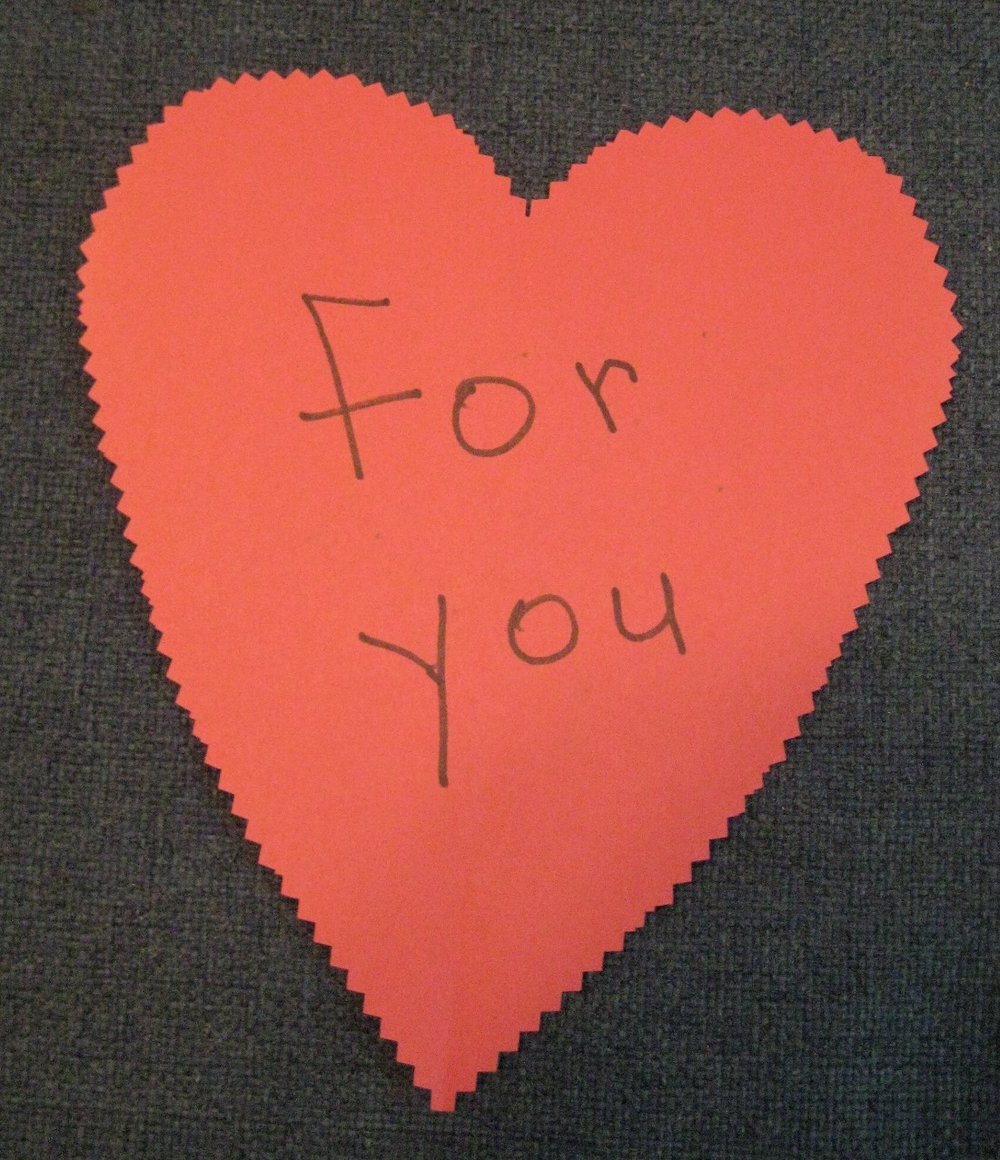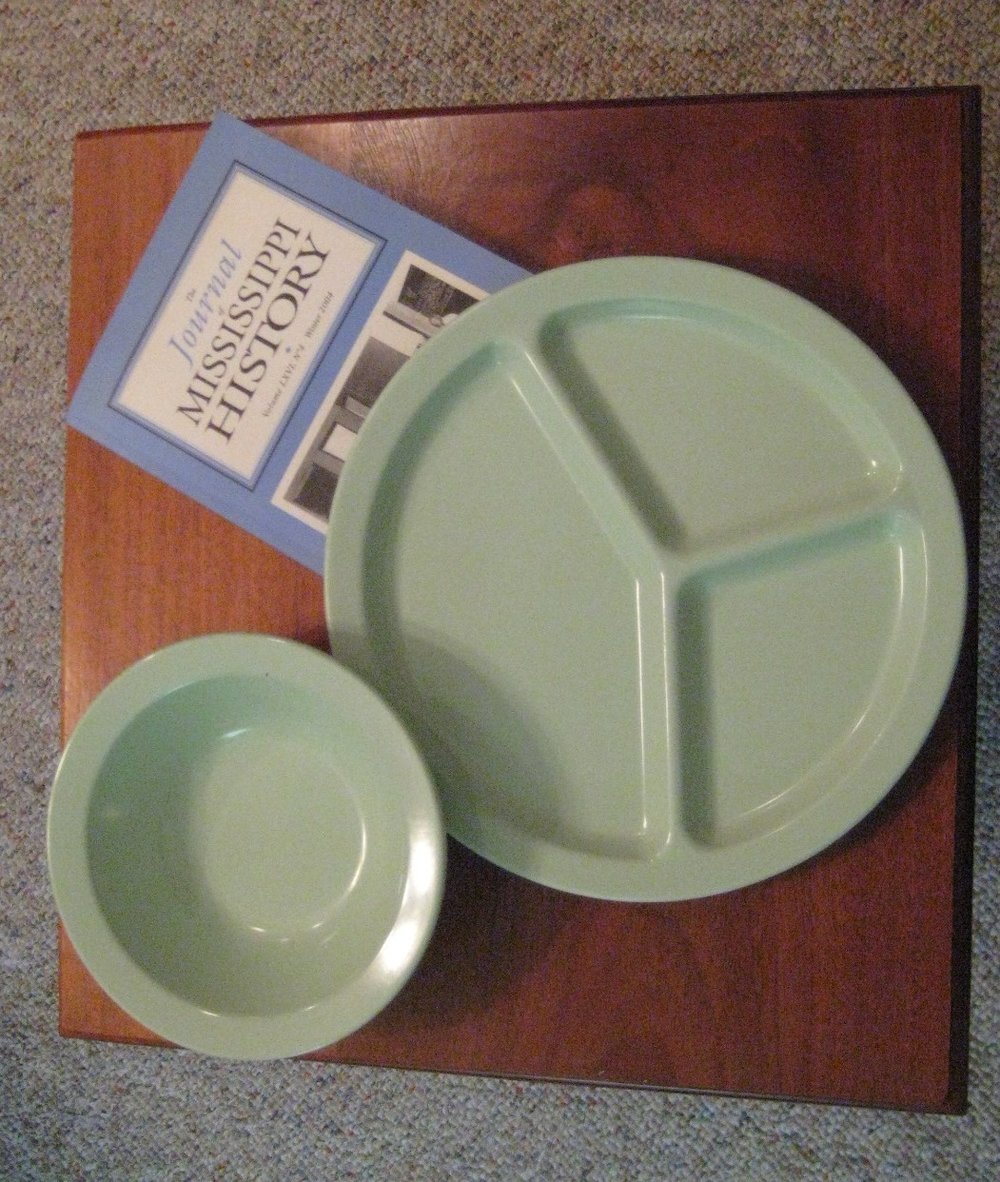
New Mexico became a state in January followed by Arizona in February. In March, Juliette Gordon Low founded the Girl Guides [Girl Scouts] and the first cherry blossom trees were planted in Washington, DC. The Titanic hit an iceberg on April 14 and sank the next day as the band played on. The Boston Red Sox defeated the New York Giants four games to three to win the World Series in October, and Woodrow Wilson was elected the 28th President of the United States in November.
You can learn all these useful items by googling “1912.” You won’t find something that occurred on October 21. A little girl was born that day to Erskine and Ada Hannah on a dairy farm in Sturgis, Mississippi. She lived her entire life in the state, never more than 150 miles from her place of birth. Her limited travels took her to a small percentage of the fifty states, Argentina, and Germany.
She took her position as oldest child and role model for her five brothers and sisters sometimes more seriously than they liked. She taught four daughters born to her and a foster daughter to love God, people, and books – pretty much in that order. She loved the title of “Grandma” and made sure her grandchildren knew the magic words – “thank you” and “please.” She touched innumerable lives as she served as both driver and partner for her visually challenged husband, a North Mississippi country preacher.
You won’t find Virginia Hannah McGee’s name on any of the datelines of “What Happened in 1912,” yet Mama’s influence continues to be passed along – even to great-grandchildren she never knew.
Becoming a Double Library Friend

Let me recommend an enjoyable friendship for you. October 21-27 is National Friends of Libraries Week. One of the nice things about library friendships is their lack of jealousy. I am friends with two – giving equal time as I recently volunteered at their respective books sales about two weeks apart.
The first is in my neighborhood, Oak Grove Public Library. My excitement knew no bounds when it was completed about two years after we moved to Hattiesburg. Eight minutes from my door to theirs! I signed up on their initial offer of friendship, and our relationship has grown ever since. They find books I’m looking for on the shelves or in other libraries, provide a wonderful Classics Book Club that I enjoy, let me make suggestions for book purchases, extend my book loan time to a month, and never bat an eye when I check out a stack that includes everything from picture books to War and Peace. To borrow from the Cheers theme, “It’s a place where everybody knows my name.” 
I’m not close enough to be friends, but I also “like” Marshall Public Library in Texas on their Facebook site. My daughter is the director, and you know the old cliché – “Any friend of Anna’s is . . . “
So - if you’re not friends with a library or two, you’re missing out. If I were you, I’d go find one.
Loving a Garden into Being
Greenprints AKA “The Weeder’s Digest,” a light-hearted small magazine, feeds both my passions – writing and gardening. This isn’t a how-to magazine. I get that from Mississippi Gardener, introduced by my sister Gwyn when I returned to this state. Greenprints contains stories, poems, and quotes about gardens and garden-tenders. It’s a just-for-fun kind of magazine.
Recently it carried a Chinese proverb: A real garden where one can enter in and forget the world cannot be made in a week or a month or a year. It must be planned for and waited for and loved into being. The proverb made me reflect on my own yard and its progression.
The previous owners of our house created a beautiful yard, which didn’t fit my taste much better than the pink paint throughout the house. We took care of the paint color before we moved in. The yard, with its formal shrubs shaped like football helmets or tissue boxes and flowers that bloomed in proper rows and spaces, has taken longer. I’ve slowly loved it into a haphazard passalong country garden with:
• Old-fashioned leggy yellow chrysanthemums inherited from Mama’s yard
• Asters from Gwyn
• Lantana – butterfly favorite in multiple colors and varieties
• Wildflowers - coreopsis, goldenrod, coneflower, rose of Sharon, Queen Anne's lace, spiderwort
• My mother-in-law’s old-fashioned red rose
• Pink daisy-like mums from Uncle Leo
• Papaw’s milk and wine lilies
• Mexican petunias – so invasive that I am now trying to prevent them from taking the whole yard
Actually, there are too many to name. If I like a flower, I try a few. They respond by dying, blooming, reseeding, taking over – I never know, but it’s always entertaining. With my red-berried holly and nandina for the winter months, there is always something blooming and something coming on. So far it’s only taken eleven years to love this garden into being.
Perfect Timing

• Having heard about her for some time from our mutual friend Kimberly Willis Holt, I first met Rebecca Kai Dotlich at the April 2012 Kaigler Children’s Book Festival. I fell in love with her voice and poetry. [See my “Pocket Poem” blog.]
• My newest grandchild, Benjamin Taylor Butler, was born on August 18, 2012.
• Rebecca’s new picture book What Can a Crane Pick Up? was released in September 2012 – a perfect fit for a little boy.
• With a bit of arranging between us, I received a signed copy for Benjamin in the mail from her on October 11.
• On October 25, I will be flying up for my first visit with him bringing his first book with an author signature. Perfect timing!
Her signature is apropos to both the book and the boy. “Hello, 
Having the long held opinion that a child is never too young for books, I’m figuring he’ll enjoy the music of the words and the colors of the pictures while I rock him now. As he gets older, he’ll enjoy the poetry and humor. An added bonus for his parents is that the book will be one they are willing to read over and over – as he will surely request.
If you happen to be looking for a fun book for a kid, you need look no further. [Girls will like it, too!]
Son

If the girl learns to read, she may want you to read the books that she brings home from the library with her.
If you read her books with her, she may insist on reading your books with you.
If both of you have read the same books, the girl may discuss the books with you.
If her love of reading continues, the girl may grow up to be a librarian.
If she grows up to be a librarian with access to reviews of new releases, you may get special books for Mother’s Day, your birthday, and Christmas.
My apologies to Laura Numeroff for borrowing the pattern from her not-to-be missed picture books beginning with If You Give a Mouse a Cookie, but my sequence happened just this way. The special birthday book – late only because the release date was three days after my birthday – was Son, the last in the Lois Lowry quartet that began with The Giver. Coming out during Banned Books Week made the release time doubly appropriate since The Giver is near the top of every banned book list with its crime of making the reader think.
If you read my “Whatsitsname Book Group” blog, you know I was waiting for the release and had a guess about the name of the book. As I expected, I was wrong. Predictable is not a description for Lois Lowry. But I was happy with the boy who turned out to be the Son.
I highly recommend what the girl, now librarian, said she planned to do. Read the first three if you never have or if you haven’t read them recently before you read this one. In order, the quartet is The Giver, Gathering Blue, Messenger, and Son. Kirkus Reviews says Son stands on its own. It probably does, but as I read, I saw many things that would be missed if the reader had not read the other three.
The book follows the theme set out in the first three books of the value in every person, referred to on page 290. “It had been Jonas, during his time as Leader, who had gently but firmly reminded the villagers that they had all been outsiders once. They had all come here for a new life. Eventually they had voted to remain what they had become: a sanctuary, a place of welcome.” The Giver remains my favorite, but I enjoyed all four.
If you love Lois Lowry books, Son does not disappoint. Neither does the girl who became a librarian.
In Defense of Goldenrod
I find myself defending goldenrod every year about this time. My first memory of the false accusation that it causes allergies came when I was ten or so. My mother had some kind of meeting. As usual, she did one of her beautiful flower arrangements for the table. Goldenrod served as the anchor and was finished with a mixture of other fall flowers. Mama regularly treated wild flowers with the same esteem as her cultivated ones. She also liked Queen Anne’s Lace and used it in my wedding arrangements.
One of the ladies who attended the meeting commented as soon as she spotted the flowers that she was very allergic to goldenrod. Mama took the flowers out and dumped them. As best I can remember, she never again used them in an arrangement when anyone would be with us other than family.
For the record, there are many species of goldenrod – all beautiful and none allergenic. The problem is that they are prominent to the eye at the same time that the nondescript ragweed is blooming. They get the blame for the problem caused by the ragweed, which has pollen that can blow as far as 100 miles. I liken it to the schoolboy who gets punished for an outburst when a little girl has been kicking him under the table for fifteen minutes.
I love the golden spikes as they herald the beginning of fall, my favorite season of the year. I didn’t have any in my yard when I moved here, and I share Mama’s nondiscriminatory policy toward wildflowers. I pulled off a few seed heads from roadside blooms when I went for my daily walk the first year I was here and just threw them out a couple of places around the yard. Since they are prolific re-seeders, I now have a satisfying number around the edges of my yard each fall. And the spectacular fields of them and black-eyed Susans between my house and the dentist’s office shortens my 35 mile trip north this time of year.
So if you have the opportunity to relish some goldenrod, just enjoy. But do your best not to get within a hundred miles of the ragweed.
Yes, He Did

But it was not always this way! Al grew up in a household with four boys and a mother who was Queen of the Kitchen. When we married, the extent of his culinary skills was popcorn with peanuts that roasted as the corn popped. [This is quite delicious. I often claim it is both the reason I married him and the reason I stay married to him.]
In the early days of our marriage, he volunteered to chop onions or peel potatoes, but left the cooking to me. He also instituted a system. If I cooked, he cleaned up. I liked cooking. Cleaning up? – Not so much. It worked for me.
About fifteen years into the marriage, our church had a cook-off where the deacons and pastor were to bake a cake for a church event with no help from their wives. The cakes would be judged and given ribbons. After choosing to bake a cake with a gazillion ingredients and asking two and a half gazillion questions, Al had the cake ready to go in the oven – which he had failed to turn on. Wonder of wonders, he won first prize and gained something far beyond his blue ribbon.
A whole new hobby began as he delved into the cookbook for more cake recipes, and then went on to recipes for other foods. Our children’s friends checked to see when he was making Oklahoma Dip. Today’s church potluck attendees corner me to see what Al brought, hoping for his famous Carrot Cake or Chocolate Sheath Cake, which they often mistakenly call his “brownies.”
We now operate under a different arrangement with the cooking coming out somewhere near fifty-fifty. He has also altered his system. If I cook, he cleans up. If he cooks, he cleans up. It works for me.
First Anniversary

When I started, the advice said to be consistent in posting and to be committed to the writing so your readers knew they could count on you. I began posting twice a week with a bit of experimenting initially with which days were best for me to become consistent. Within a month, I had figured it out and set my schedule for Mondays and Fridays – usually before 6 AM Central Standard or Daylight Time. I wondered how well I would stay with it since I have never been a consistent journal writer. I think the obligation calling to me from those to whom I offered my heart - my readers – has helped me stay on track.
I’ve thought this so seriously that at times I’ve wanted to insert “Reader” like Charlotte Bronte in Jane Eyre or “Dear Reader” like Kate De Camillo in The Tale of Despereaux.
It’s been an interesting journey with readers who are regulars, readers who are now-and-then, and readers who stumble upon the blog once in a while. Family members, local friends, friends from other places and long ago, former students whom I now count among my adult friends, and new acquaintances mingle with people who found my blog because they googled a word. Surprising to me have been the number of international hits. I can only assume they have found the blog by word searches.
Other curiosities have come from which blogs have received the most hits – not necessarily the ones I spent the most time on. I’ve wondered why “Yes, Virginia, There Is” that I considered a light-hearted Christmas piece continues to get hits every week and why others have popped back up after a long silence – “Wet Cement Childhood” and “The Forest Lover.” I can figure that “A Teacher Who Made a Difference to Me” got extra hits because school started.
As I promised in “About This Blog,” I've offered:
• readin” – [more that 130 book mentions and a number of poems],
• writin’ – it’s all been writin’,
• and not that much ‘rithmetic – just the Baylor numbers in “A Bit of Baylor ‘Rithmetic” and the bees in “Bees 8, Virginia 0” with the addition of one more as I note that twice a week for one year makes for 104 blogs.
Monday I will start the second year with a similar promise. ‘Rithmetic won’t come that often unless Baylor has another good year or – miracle of miracles – Ole Miss has one. And Dear Reader, I’m offering them from my heart to you.
Celebration Times Two

The new favorite, Tia Isa Wants a Car by Meg Medina, takes its roots in a true story from her family. This book won the Ezra Jack Keats New Writer Award for 2012. In her acceptance speech as Meg told “the rest of the story,” she had her audience alternating between laughing and crying. The story line has the little girl [Meg?] helping Tia Isa, her aunt who is younger and more fun-loving than the other adults in the family, save money for a car. Part of myAunt Ruth reason for loving the book is that I also have an aunt who was a lot of fun and sometimes helped fudge a few adult rules. Her age made her about as much sister as aunt. I call her Aunt Ruth. You’ll want to be sure to read the book if you have one of those aunts.
You may want to join this celebration by reading these books or by finding additional Hispanic Heritage candidates at the American Library Association’s website under the Pura Belpré Awards. The medal is set up to honor Latino/Latina writers and illustrators whose works best portray, affirm, and celebrate the Latino cultural experience in an outstanding work of literature for children and youth. You’ll find their great stories and beautiful artwork at: http://www.ala.org/alsc/awardsgrants.
Oh, and if you should have a chance to hear Pat Mora or Meg Medina speak – take it!
Not Kidding

The couple illustrated the old adage of opposites attracting in both physical characteristics and personality. Crockett was tall, unruffled, and a night owl. Ruth was tiny, apprehensive, and tended to fall asleep before the party was over. In their early success, his Barnaby cartoons appealed to the intelligentsia while her The Carrot Seed, which he illustrated with a child resembling Barnaby, was a hit with the preschool crowd and made the recommended reading list for the Catholic Church.
In philosophy and life interests, they were more alike. They shared concern for the powerless and for the civil rights of all people. Their leftward political leanings and openness about these concerns in the late 40s and early 50s brought them under suspicion by the FBI and the House Un-American Activities Committee. Their skirmishes with the FBI seemed even more amusing when the surveillance was dropped to keep from embarrassing the bureau shortly before the publication of Crockett’s iconic Harold and the Purple Crayon.
Of real reader interest are some of the people who were part of their lives, names recognizable from their literary or political history. They mentored Maurice Sendak early in his life at the beginning of his career. Ruth coached him on illustrating her book – sometimes getting into arguments that Crockett had to referee. Then there was young Ronny Howard, before he was Opie, starring as Crockett’s Barnaby in Ronald Reagan’s General Electric Theater. Any page turn may bring the reader to an “I know who that is!” moment.
Of interest to today’s children’s writers are the differences in the way Ruth and Crockett worked with editors and illustrators. They had an ongoing ambivalent relationship with editor Ursula Nordstrom, and Ruth regularly gave instructions to her illustrators and sometimes had them do their work over. She
Since Philip Nel did his research well, the book is quite scholarly. However, the reader finds Crockett Johnson and Ruth Krauss to be real people likely to be good dinner companions. The reader finds irony in Crockett’s fascination with intricate artistic geometric forms balanced with the simplicity of Harold’s crayon. And Ruth provides a great deal of fun along with a cure for aging – just backdate your birth by ten years. [She advises ten rather than another number because it’s easier to remember.] I’m not kidding when I add the adjectives “surprising” and “satisfying” to “scholarly” in describing the book. I'm just sorry I couldn’t have that dinner with them.
Write It Right!

A similar instance came when I was reading middle grade and young adult books along with my friend who was on the Newbery Committee. She had asked me to give her my opinions about the books I read. You can guess how little effort it took to talk me into that project! One of the books had two “nice” girls in the 50s who swore like sailors regularly in front of the mother with no reaction on her part. Wrong again – not in the 1950s! One swear word, especially from a girl, in a mother’s earshot would have called for major mouth washing with a bar of Dial soap.
I read a historical novel with a conversation between a Southern Captain and a Yankee Colonel after the Civil War. I thought I’d missed something when the captain used, “y’all” as a form of address. I traced back several pages to find the other people in the discussion. Not there. The author should have let a Southerner read her text! It took me back to my school days when a couple of boys had this huge argument with our English teacher that “you” being both singular and plural would never work. They insisted that “y’all” made a perfect plural for “you” and should be used in the entire English-speaking world. [On another issue, be sure to note where the apostrophe is. My daughter becomes Anna-gone-Bananas when she sees it spelled “ya’ll.”]
The trouble with being so picky is that I’ve lost a very good line from my as-yet-unpublished middle grade novel set in 1946. As Jimmy shows the new preacher’s daughter the school and points out the cafeteria, he says, “They cook the food with a lot of fatback and not much imagination.” I was thrilled, as
Wonder what kind of story I could write that is set after 1947? I hate to toss such a good sentence.
My Art Lessons

Rural schools I attended had nothing remotely resembling even an art appreciation class, and I missed it in college by using music appreciation to fill my fine arts requirement – keeping a close tie with my comfort zone. My next lessons came as an adult with do-it-yourself lessons again, this time in European art galleries, courtesy of Army designations for home in France, Belgium, and Germany. The biggest surprise in these lessons came in discovering the small size of the Mona Lisa in the Louvre.
Andy Wood, an extraordinary art teacher in South Polk Elementary School in Louisiana, gave me my next lessons. She knew how to encourage my second graders who were as untalented as their teacher and to bring out the gifts in those with natural talent. After listening to me bemoaning the fact that I lacked ability to follow up on the wonderful art lessons
In recent years, I have found a real art teacher. Grandson Hayden, blessed with both talent and good art teachers, patiently gives instructions to a grandmother who had neither. One year he told me how he’d learned to find the central theme in a miniature part of a picture or photograph and use that for his drawing. He was preparing me for our Christmas present – a piece of art he did of my hand through my husband’s arm from our wedding picture.
Recently, he took me through The Snowy Day page by page, knowing my love for author Ezra Jack Keats and the story in the book, and showed me what artist Ezra Jack Keats intended for the eye to see. He pointed out the assorted color collage that anchors the bathtub on one page. In my favorite instruction, he 
Hayden, a freshman at the University of Hawaii, plans to add teaching credentials to his major in art. In an unbiased prediction, he will be a good art teacher. He’s had practice already with his grandmother.
Without Books
 Left to my own preferences in books, I would read nonfiction, mysteries, historical fiction, and realistic literary fiction. My Classics Book Club at Oak Grove Library sometimes pushes me out of my comfort zone as it has with our last selection of Fahrenheit 451. Ray Bradbury’s book, whose title is based on his perception of the temperature at which a book will self-combust, conjures up some thought-provoking ideas.
Left to my own preferences in books, I would read nonfiction, mysteries, historical fiction, and realistic literary fiction. My Classics Book Club at Oak Grove Library sometimes pushes me out of my comfort zone as it has with our last selection of Fahrenheit 451. Ray Bradbury’s book, whose title is based on his perception of the temperature at which a book will self-combust, conjures up some thought-provoking ideas.
The question in a community where firemen burn houses that are found to contain books is, “Do you know why books are hated and feared?” The provocative answer is that they show the pores in life. This book is not really about censorship but about experiencing all of life. He started me thinking of important things – and some not so important that I would have missed without books.
I often need Anne Frank’s reminder from her diary, “Despite everything, I believe that people are really good at heart.”
I learned during my gazillion readings of Little Women, that Jo’s loneliness even as she shares the happiness in a family crowd, can bring as many tears as the death of her beloved sister Beth. [I cry over books more often than movies and probably more than in real life, sometimes to the point of having to gain control before I can finish reading.]
books more often than movies and probably more than in real life, sometimes to the point of having to gain control before I can finish reading.]
From Mr. Gilbreth’s autocratic rule of the family dinner table in Cheaper by the Dozen which I read aloud to my junior high students, we learned the phrase “Not of general interest,” which he used to squelch any topic he did not want discussed. Consequently, they knew when I said, “Not of general interest,” that they had strayed too far from the English class topic – and probably pictured me as the autocrat!
I’ve learned good timing from Richard Peck in The Teacher’s Funeral, “If your teacher has to die, August isn’t a bad time of year for it.”
Even without being a cat lover, my heart learned compassion as Kathi Apelt began The Underneath, “There is nothing lonelier than a cat who has been loved, at least for a while, and then abandoned by the side of the road.”
Shel Silverstein’s Where the Sidewalk Ends gives what must be the scientific reason that “You’ll see catsandratsandelephants, but sure as you’re born you’re never gonna see no Unicorn.”

And who knows, if it hadn’t been for the good advice from Mo Willems, I might have let that crazy pigeon drive the bus!
I think Ray Bradbury is right. Books show us the pores, the real, in life and lead us to see everything from beauty to pain to laughter in the everyday. So far I’ve enjoyed the trips beyond my comfort zone brought on by this book club and some of the books visited for the first time or reread that fit in with my own preferences. I can’t wait to enjoy again next month’s selection of The Adventures of Huckleberry Finn. But let me say for sure that if Moby Dick is ever on our list, I’m outta’ here – at least for that month.
Atoning for Pencil Freeze

I’ve atoned by taking notes as I read her book Between Shades of Gray. [I know – there’s another popular gray book this year. This is not it.] But this book is a New York Times notable book, an international bestseller, and a Carnegie Medal nominee. Billed as a young adult novel and set in the reality of Lithuania’s disappearance from maps from 1941–1990, its fictional account of Lina’s journey grips and holds a reader of any age. Lina’s unrelieved courage and creativity, from the moment she and her family are arrested in the middle of the night, carry her through inhuman living conditions sparked with hope in the drawings she secretly creates and passes along.
A few quotes will give you a small taste:
“Have you ever wondered what a human life is worth? That morning, my brother’s was worth a pocket watch.”
From Lina’s view as the train pulled away from the platform:
“The priest looked up, flung oil, and made the sign of the cross as our train rolled away. He was issuing last rites.”
As Lina watched over her brother Jonas, near death from scurvy and starvation, and remembered her dashed hopes of going to art school and her favorite artist Edvard Munch:
“Each time I closed my eyes, I saw the painting of ‘The Scream’ in my head, but the face was my face.”
The truth in this fiction came from Ruta’s search in real life for her family roots, which took her to a happening the world has forgotten. She has brought it back to life in Lina. Lest we forget . . .
P. S. This was a hearty meat-and-potatoes grow-your-soul kind of read. You might want to follow, as I did, with a light strawberries-and-cream-dessert – French by Heart by Rebecca S. Ramsey.
Overlooked Hurricane Hints

1. Assemble a tall stack of books to read.
2. Print out the manuscript-in-progress for editing.
3. Charge Kindle, cell phone, and camera batteries.
4. Clear the dining table and get out a jigsaw puzzle.
5. Harvest all the cut flowers and bring them inside for bouquets.
6. Gather gardening tools and lock them in the shed so they don’t become missiles in the wind.
7. Make weird meals from things that might spoil in the fridge or freezer. Examples? You don’t really want to know.
8. Shower today whether you need to or not. There may be no clean water tomorrow. [There’s an irony here, since more than enough comes down.]
9. Send a memo to weather reporters: (A) It is Gulf-port, not Golf-port, although people are known to play golf there. (B) Biloxi is pronounced Bi-luck-si, not Bi-lock-si. Don’t ask me why, but residents get to choose how to pronounce their own cities. (C) The Land Mass between Mobile and New Orleans is called Mississippi.
10. And most important - eat that last dark chocolate Klondike ice cream bar so it doesn’t melt.
Beware August 29
My woods trying hard to come back
When I planned this blog several weeks ago, I had no idea we would be experiencing Hurricane Isaac on the seventh anniversary of Katrina. While Isaac has dumped way too much water and worn out his welcome as he drags his feet getting out of here, we are thankful he has not left as much damage as his sister in his wake. I wrote this poem as part of my own recovery after Katrina.
Eleven years ago –
Mississippi woods out back
clinched the sale
of a home to grow old in.
The woods turned me
into a child again –
ambling down Papaw’s lane;
watching squirrels play tag through the treetops;
seeing cardinals and Eastern bluebirds
swoop from tree to tree;
listening to woodpeckers rat-a-tatting;
surrounded by majestic oaks, swaying pines, “hicker-nut” trees,
beautyberry bushes.
Seven years ago on
The morning after Katrina’s
opaque white rain and roaring wind,
in my woods,
pines stood popped off like
little boys’ pencil fights,
roots and trunks of stately oaks
lay fallen crosswise
like too many grandchildren
sleeping in the same bed.
I felt pieces of my heart shatter into
grief with searchers
for family and friends;
mourning for lost
jobs and homes;
anger at those who would
loot, shoot, and gouge;
relief that Katrina was gone and
we were safe;
gratitude for
our intact home;
and one sizeable shard of
lament for woods
that will not renew in my lifetime.
This poem was published in the “When Things Get Back to Normal” issue of Thema Magazine [Vol. 20, No. 3; Autumn 2008]
Firsts

Preparation is underway for the upcoming fall conference sponsored by Southern Breeze Region of the Society of Children’s Book Writers and Illustrators in Birmingham, Alabama on October 20, aptly called Writing
A blog tour, which will be a first for me, introduces the workshop leaders. I will be leading a workshop called “Story of a Story” about the possibilities in writing for children’s magazines. Beginning today, Bonnie Herold carries my interview at http://tenacioustelleroftales.blogspot.com. She picked up on 
If you are interested in learning about writing for children, meeting editors and agents, or connecting with other writers and illustrators, learn more about 
Advice Not Taken
Not!A distillation of advice I’ve heard for conference attendees is, “Listen to everything, consider advice carefully, keep what works for you, and feel free to discard the rest.” Come to think of it, that’s not a bad plan for life as well, but I diverge.
Deborah Underwood’s topic at the SCBWI conference in Los Angeles was “The Power of Quiet.” She emphasized the importance of quiet for the creative person. I listened and agreed with much of what she said, knowing that good ideas often come with my mind unoccupied while my hands are busy in the garden. [They also come sometimes during Sunday sermons, but that’s another story.]
Then Deborah made a proposal that almost sent me screaming from the room. She suggested that we sit on the edge of the bed for twenty minutes doing absolutely nothing. Talk about 
But since I am in need of a new idea, I think I’ll go out and pull a few weeds.
No Surprise Present
If your grandmother’s business card reads “Retired Teacher – Working Writer,” predictable presents come for birthdays and Christmas. On his tenth birthday, Jack called attention to this phenomenon at the dinner hosted by his parents with his best friend, his other grandmother, and us in attendance. When time came for presents, he picked up ours and said, “I think it’s a book.” He got a good laugh for stating the obvious.
The only surprise comes in which book I’ve gotten signed. One year, Gary Schmidt spoke at the Faye B. Kaigler Children’s Book Festival on the release day for Okay for Now – and signed three Christmas presents. Sometimes it’s been a Jerry Pinkney picture book for an almost grown grandson so he can have the art. There’ve been books signed by Jane Yolen, Richard Peck, Lois Lowry, and Dan Yaccarino. This year’s are still a secret, but let me say I stood in line for more than two hours after a full day of workshops at the SCBWI Conference in Los Angeles to get some special books autographed.
And now there’s a new little one! Jack might tell his cousin what to expect – or maybe he can guess when he is old enough to examine his afghan made by the aforementioned grandmother. I crossed a multitude of stitches in this creation that includes Winnie the Pooh and Christopher Robin; Babar and Celeste; Spot; Paddington; and especially Peter Rabbit and Benjamin Bunny.Welcome to the world, Benjamin Taylor Butler. May your life be filled with stories. You can count on me to help that wish come true!
Cake and Icing

It set me to appreciating the metaphor in my own life. For almost three years, Jacob Ezra Katz’s journey to become Ezra Jack Keats has been the focus of my writing life. It’s been cake! It all started with a conversation with Ellen Ruffin, curator of the de Grummond Children’s Literature Collection, and Deborah Pope, director of the Ezra Jack Keats Foundation. They set me on an assignment to find treasures in the Keats archives for the 50th anniversary edition of The Snowy Day, winner of the Caldecott Award and the first full color picture book to feature a black child as the protagonist in a non-stereotypical way. A short deadline left me no time to linger among the two large boxes of correspondence files and the 170 + archival boxes of Keats memorabilia. However, I saw a biography begging to be written and knew I would return.
Deadline finished, I came back to read each letter, see each painting, and take in each of Keats’s own anecdotes. Special Collections librarians managing the desk in the Reading Room kept me supplied with the next box and feigned interest in my end-of-the-day accounts of new things I’d learned. Come to think of it, the interest may not have been feigned. They mostly match me nerd for nerd.
Months later with information stored in my computer, the sorting and writing began. Like setting out ingredients and measuring utensils on the counter, I put the stories in chronological order and began to write. The cake began to take shape. The smell from the oven has included the writing of the story, phone calls with questions from people who now consider me a Keats expert, friendships with “Keats 
All the same, I’d like the icing of the book in my hand with "Virginia McGee Butler" running down its spine!






